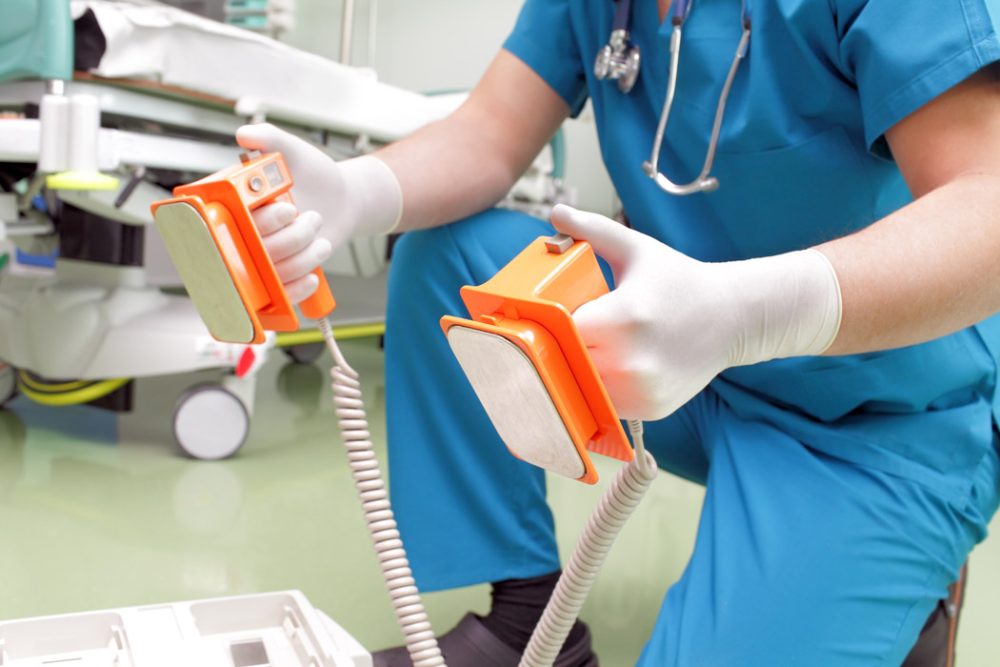Advertisment
Older frail patients have a 1-in-3 chance of surviving CPR during surgery

It’s estimated that around 25% of patients who have a cardiac arrest and receive cardiopulmonary resuscitation (CPR) in a normal hospital setting will survive. Those odds shoot up to 50% for patients who receive CPR during or in the immediate period following surgery, where they are closely monitored by specialists who know their medical history and can intervene without delay. But it’s unclear whether that trend applies to frail patients, who are often older and at a higher risk of experiencing CPR-related trauma and complications. Such uncertainty has led some doctors to wonder: are efforts to resuscitate frail patients in the operating room futile?
To address this question, a team from Brigham and Women’s Hospital, a founding member of the Mass General Brigham healthcare system, analyzed a national cohort of over 3000 patients and determined that around one in three older frail patients survive surgical CPR. They also discovered that frail patients were more likely to die from cardiac arrests that occurred during non-emergency procedures than non-frail individuals, which could translate into higher overall surgery risks for frail patients. They say their findings, published today in JAMA Network Open, can help physicians navigate the risks of performing surgical CPR in frail patients.
“CPR should not be considered futile for frail patients in the context of surgery,” said lead author Matt Allen, MD, an attending physician in the Brigham’s Department of Anesthesiology. “But it’s not the case that these patients do just as well as anybody else. In fact, we see a significant association between frailty and mortality.”
Cardiac arrest during surgery can be triggered by a number of factors, including adverse reactions to anesthesia, surgical problems, and underlying medical conditions. Physicians are tasked with explaining these risks to their patients prior to surgery, a conversation that often includes settling on a course of action if a cardiac arrest does occur. Some older patients go into these discussions with ‘Do Not Resuscitate’ orders, but because the odds of surviving CPR are markedly higher in the operating room, they may elect to temporarily reverse these directives.
Because so little is known about the survival outcomes for frail patients that receive CPR, physicians have struggled to fully inform patients about their risks during surgery. Frail patients can be particularly vulnerable to the chest compressions involved in CPR, which can cause rib and sternal fractures that may lead to further complications and a slow recovery in those who survive. Such grim outcomes only apply if a patient survives CPR — recent studies have calculated a mortality rate of over 95% for frail patients that receive CPR in a non-surgical setting.
To calculate the survival odds for frail patients that receive CPR during surgery, the Brigham team designed a longitudinal cohort study that drew data from the American College of Surgeons National Surgical Quality Improvement Program, a database that tracks case studies from over 700 US hospitals. The registry included 3,149 cases of patients over the age of 50 who received CPR on the day of their surgery between 2015 and 2020. They used a metric called the Risk Analysis Index (RAI) to measure frailty, which screens for declines across a patient’s bodily functions.
Out of 792 patients who were considered frail, 534 individuals, or 67%, died within 30 days of receiving CPR during surgery. Of 214 patients considered frail who survived and lived independently prior to surgery, 59% (127) were discharged to locations other than their homes, which include nursing and rehabilitation facilities.
The team also observed that frail patients were more likely to die during cardiac arrests that happened in the context of non-emergency surgeries than non-frail individuals. They cited this finding as a reminder to doctors about communicating surgical risks to frail patients, no matter how safe a procedure may seem.
“There’s a shifting paradigm away from focusing on high or low risk procedures and instead thinking increasingly about high- or low-risk patients,” Allen said. “This is another example that in frail patients, there is no such thing as a low-risk procedure.”
Disclosures: Co-author Ariela Orkaby reported receiving grant funding from the US Department of Veterans Affairs and National Institutes of Health (NIH), unrelated to this work, and a consulting relationship with Anthos Therapeutics. Co-author Daniel Hall reported receiving grant funding from the NIH and the Veterans Health Administration Office of Research and Development and consulting for FutureAssure LLC, outside the submitted work.
Funding: This work was funded by a clinical translational starter grant from Brigham and Women’s Hospital Department of Anesthesiology, Perioperative and Pain Medicine.
Paper cited: Allen MB et al. “Frailty and Outcomes Following Cardiopulmonary Resuscitation for Perioperative Cardiac Arrest” JAMA Network Open DOI: 10.1001/jamanetworkopen.2023.21465





